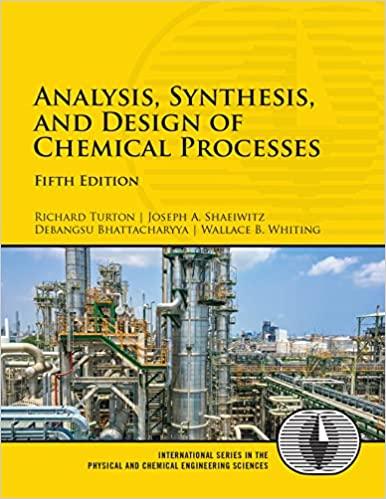In general, when using cooling water (cw) as a utility, the outlet temperature of the water leaving
Question:
In general, when using cooling water (cw) as a utility, the outlet temperature of the water leaving any process exchanger and returning to the cooling tower is limited to about 40°C to avoid excessive fouling in the process exchangers. In a series of laboratory experiments on fouling, the inlet cw temperature was fixed at 30°C, and the dimensionless fouling ratio was recorded for exit cooling water temperatures in the range of 36°C to 46°C.
The fouling ratio is simply the ratio of the time between scheduled cleanings of the exchanger tubes compared to the time required at 40°C. For example, if an exchanger with a cw exit temperature of 40°C requires cleaning once a year (12 months), then an exchanger with a cw exit temperature of 46°C requires cleaning every (0.64)(12) = 7.68 months. The advantage of using higher cw exit temperatures is that less cooling water flow is required; hence, the pumping costs for cw are lower. For a typical heat exchanger in a process with an exit cw temperature of 40°C, the yearly pumping and cleaning costs are $400/y and $2400/y, respectively. Using these costs and the information in the table above, determine the optimal cw exit temperature. Assume that the pumping costs are proportional to the flow of cooling water, that they include an amortized cost for the pump and the cost of electricity to run it, and that the cost of the heat exchanger is essentially unchanged for small differences in the cw exit temperature.
Step by Step Answer:

Analysis Synthesis And Design Of Chemical Processes
ISBN: 9780134177403
5th Edition
Authors: Richard Turton, Joseph Shaeiwitz, Debangsu Bhattacharyya, Wallace Whiting





